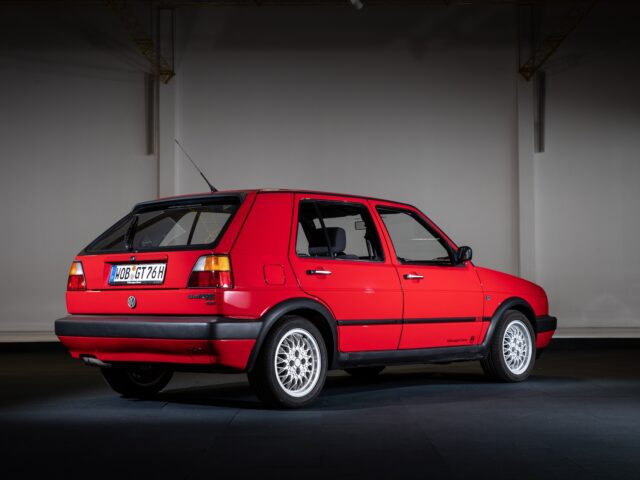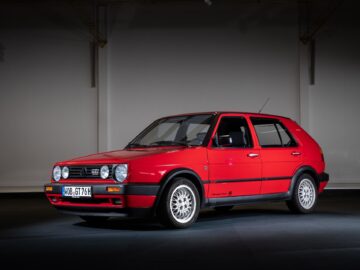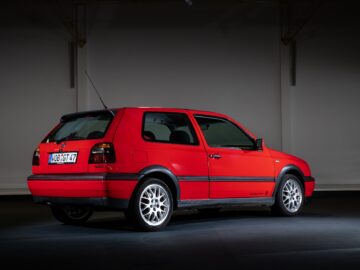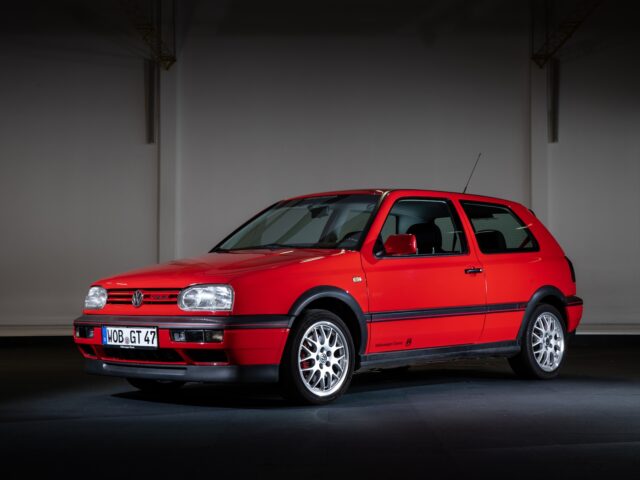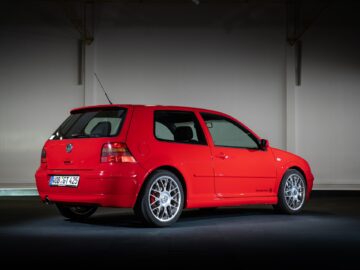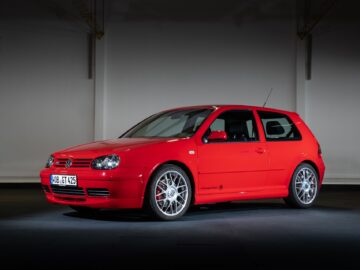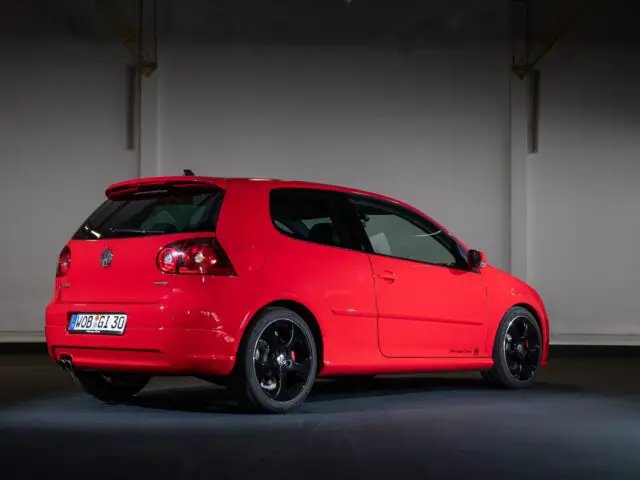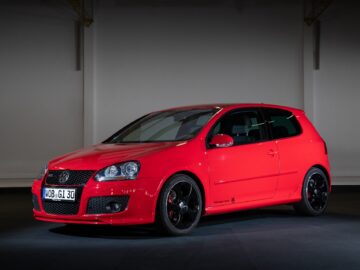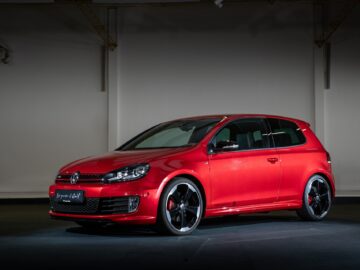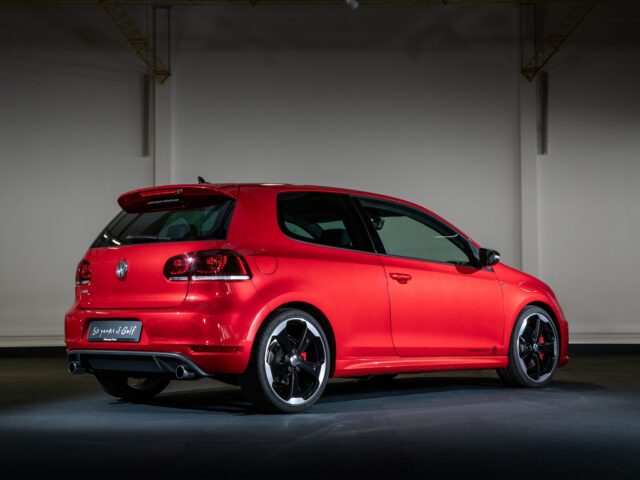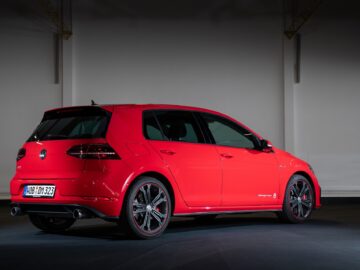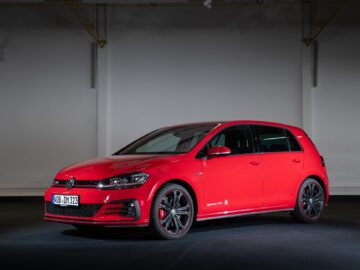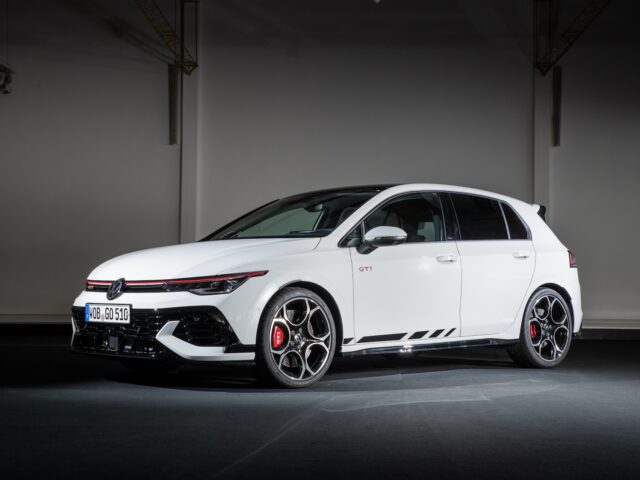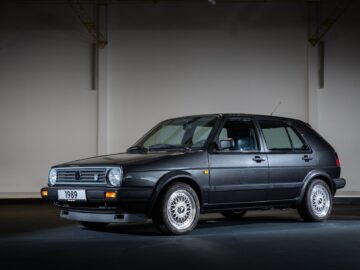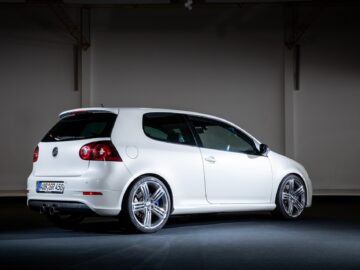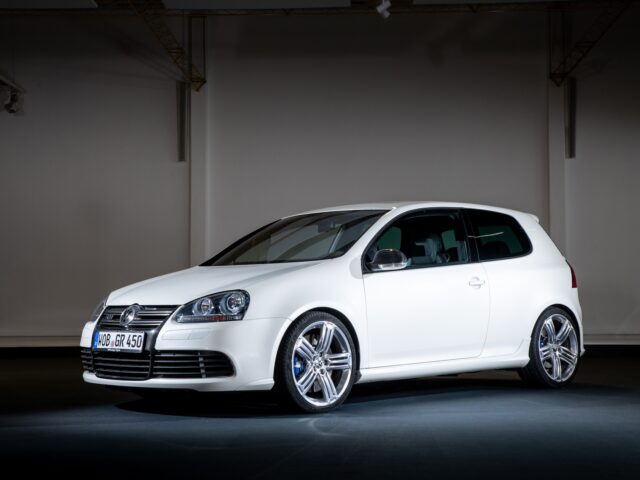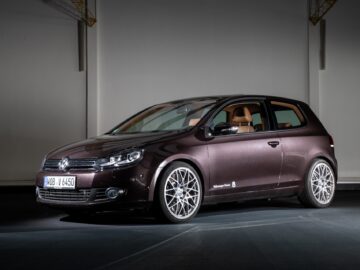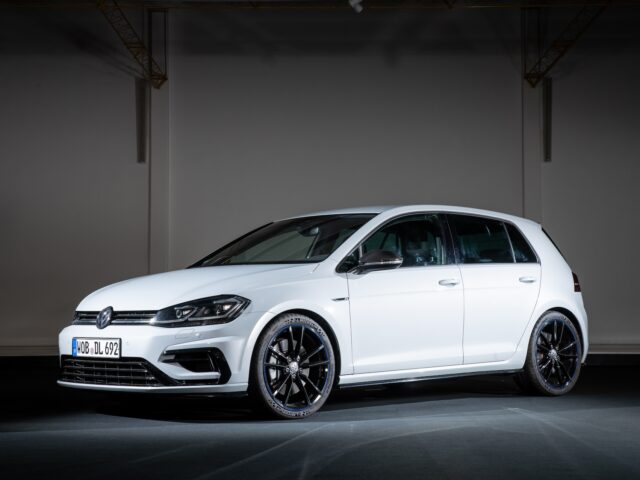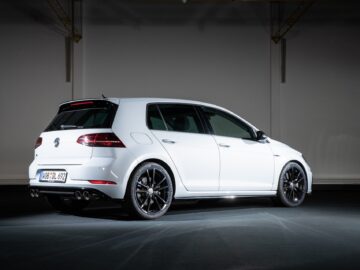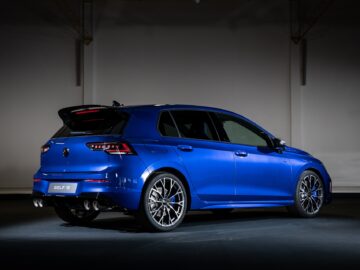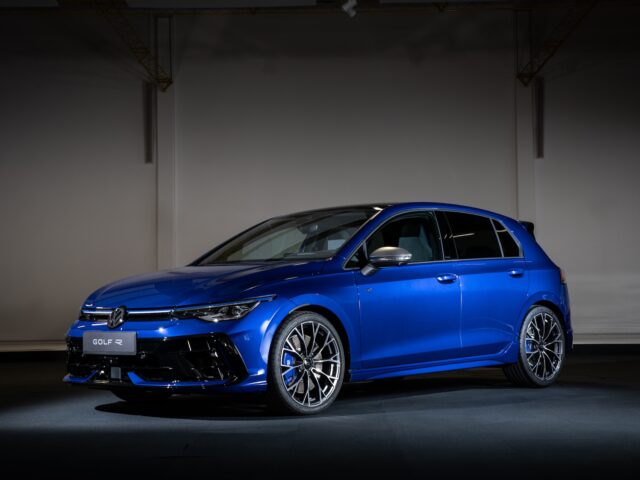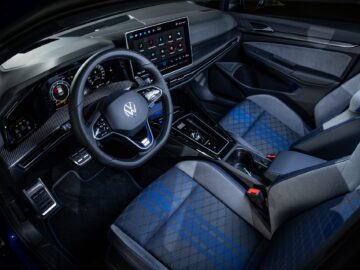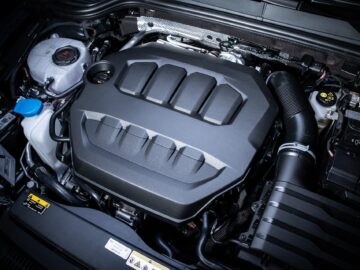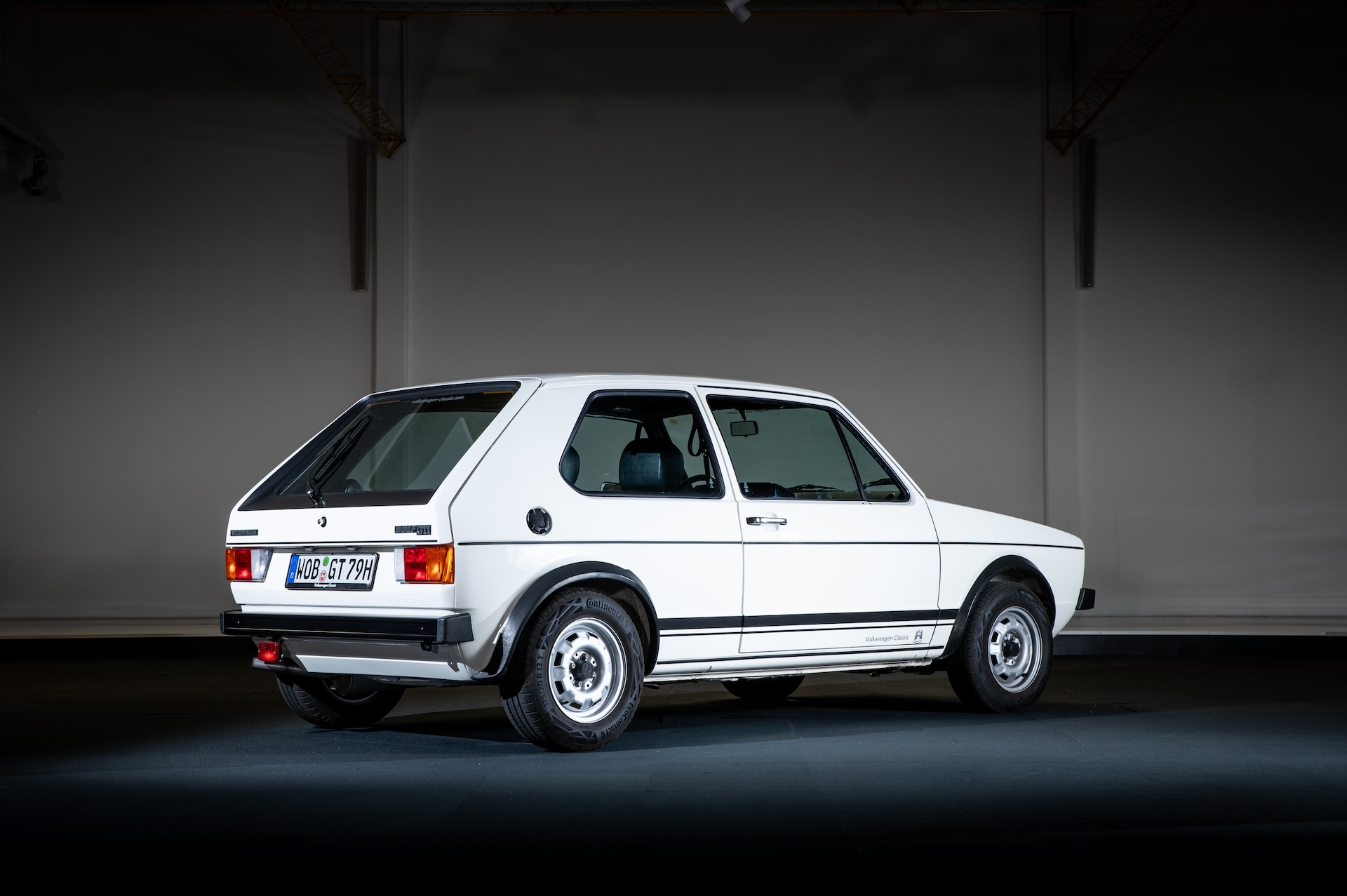Reportage: 50 years of sporty Volkswagen Golf
Volkswagen Golf GTI: the beginning
The journey of the Volkswagen Golf began 50 years ago with the development of the Golf GTI. In the early stages, in 1974, it was decided that the future GTI (which debuted in 1976) should be homologated according to FIA international regulations. That sporty character has always remained in future Golf generations, according to Volkswagen. In fact, the cars are proof. For the Golf not only shone in motorsport – think of the Group 4 Golf GTI Pierburg, Golf GTI Group A or Rallye Golf G60 Group A – but also made itself heard on the streets with GTI and R violence.
Million hit
The Golf GTI in particular, of course, enjoys iconic status. To date, over 2.4 million units of the Golf GTI have already been produced. That began, of course, with the first Golf GTI with 81 kW (110 hp). But these days, that power is very modest in a Golf. The latest Golf GTI even kicks it up to 195 kW (265 hp). That, too, could be crazier.
Several Golfs together!
Between the first and the eighth Golf GTI, six more generations left their mark on model history. At the event in Osnabrück, a second-generation Golf GTI will be present, as well as a third-generation in 20th Anniversary Edition. The fourth generation is represented by the legendary 25th Anniversary Edition, the fifth as the 30th Anniversary Edition and the sixth as the 35th Anniversary Edition. For imaging purposes, we list the performance of these models. This gives you a good idea of the performance improvements Volkswagen has made over the years.
Volkswagen Golf I GTI
- Production years: 1976 to 1983
- Power: 81 kW (110 hp)
- Engine type: 4-cylinder
- Engine capacity: 1,581 cc
- Top speed: 182 km/h
Volkswagen Golf II GTI
- Production years: 1984 to 1991
- Power: 95 kW (129 hp)
- Engine type: 4-cylinder
- Engine capacity: 1,781 cc
- Top speed: 200 km/h
Volkswagen Golf III GTI (20th Anniversary Edition)
- Production years: 1991 to 1997
- Power: 85 kW (115 hp)
- Engine type: 4-cylinder
- Engine capacity: 1,984 cc
- Top speed: 196 km/h
Volkswagen Golf IV GTI (25th Anniversary Edition)
- Production years: 1998 to 2003
- Power: 132-kW (180 hp)
- Engine type: 4 cylinder
- Engine capacity: 1,788 cc
- Top speed: 222 km/h
Volkswagen Golf V GTI (30th Anniversary Edition)
- Production years: 2004 to 2008
- Power: 169 kW (230 hp)
- Engine type: 4-cylinder
- Engine capacity: 1,984 cc
- Top speed: 245 km/h
Volkswagen Golf VI GTI (35th Anniversary Edition)
- Production years: 2009 to 2012
- Power: 173 kW (235 hp)
- Engine type: 4-cylinder
- Engine capacity: 1,984 cc
- Top speed: 247 km/h
Volkswagen Golf VII GTI (Performance)
- Production years: 2013 to 2020
- Power: 180 kW (245 hp)
- Engine type: 4-cylinder
- Engine capacity: 1,984 cc
- Top speed: 250 km/h
Volkswagen Golf VIII GTI (Clubsport)
- Production years: since 2020, but major update in 2024
- Power: 221 kW (300 hp)
- Engine type: 4-cylinder
- Engine capacity: 1,984 cc
- Top speed: 267 km/h (with Race Package)
Further enhanced Volkswagen Golf GTI
By the way, in 2024 the newly developed eighth-generation Golf GTI appeared. The output of the Golf GTI increased from 180 kW (245 hp) to 194 kW (265 hp), but the output of the further improved Golf GTI Clubsport remains at 220 kW (300 hp). The LED headlights and taillights have been redesigned, and the infotainment systems have also been newly developed. In addition, Volkswagen further refined the chassis.
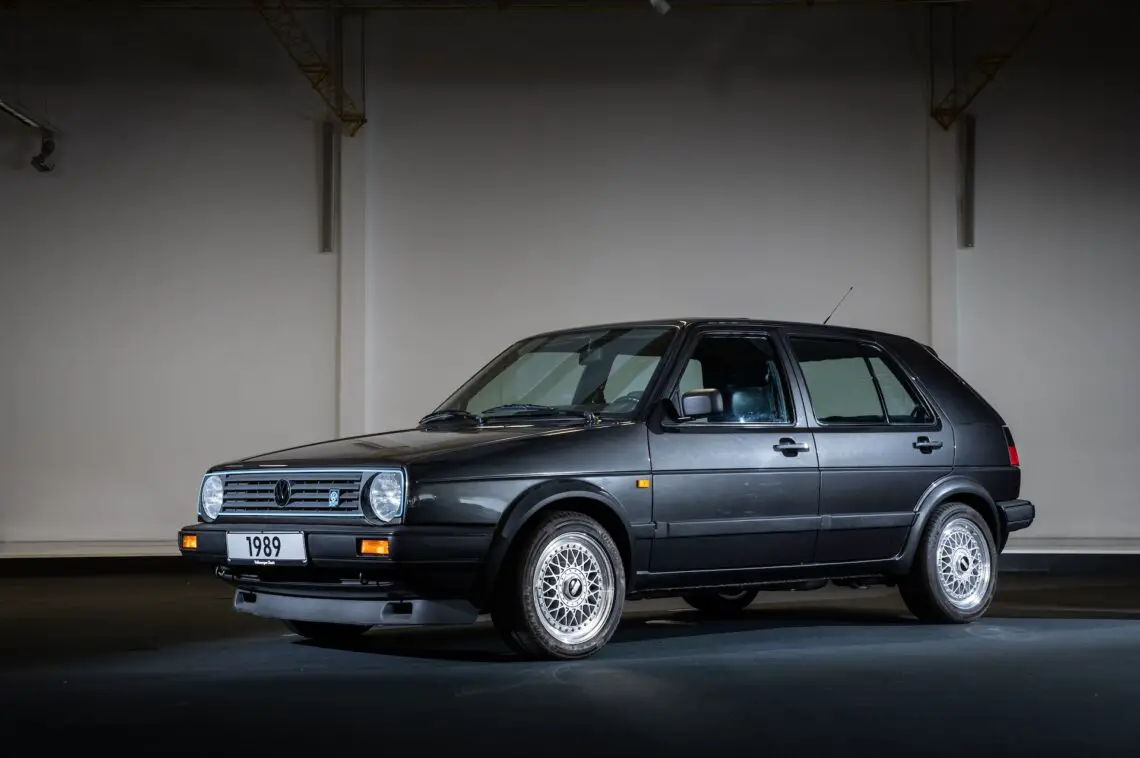
Volkswagen Golf R
Of course, there is also the Volkswagen Golf R. Like the “GTI” badge, the “R” badge is inseparable from the Golf, but not since the beginning. In all, there have been five generations. Two Golf R32s and three Golf Rs will be present during the event.
It started with the G60
The spiritual ancestor of these R-cars is a 1989 Golf: the G60 Limited from Volkswagen Motorsport. With only 71 examples ever built, this 154 kW (210 hp) model matched the dynamics of the Porsche 944 of its time. Number 13 of the 71 is proudly on display in Osnabrück. A modern reinterpretation of the now classic G60 Limited is the first R32, based on the Golf IV. With its compact V6 engine, this is a sought-after vintage car today. It was succeeded by the second R32, the most powerful fifth-generation Golf, presented at the show with an upgraded 331 kW (450 hp) engine.
Goodbye V6, welcome four-in-line
In 2009, with the third generation, Volkswagen switched from the atmospheric V6 engine to the four-cylinder turbocharged EA888 engine series. This change significantly increased power output and reduced fuel consumption. This generation is also represented at the show by an exclusive conversion with a V6 supercharged engine. The first Golf R Variant also debuted in the fourth generation. Recently, the fifth generation appeared on stage. The 177 kW (241 hp) of the first Golf R32 evolved to 245 kW (333 hp). So there too – as with the GTI – there is a substantial increase in power.
